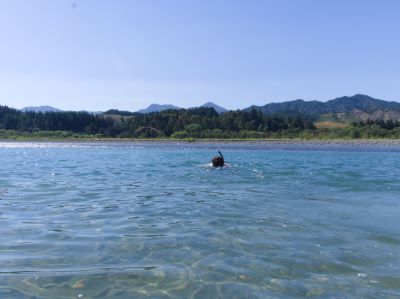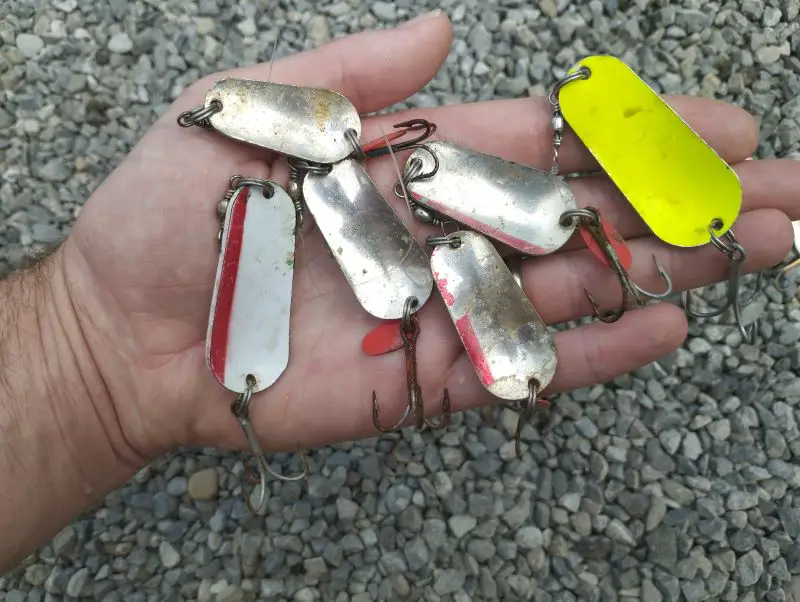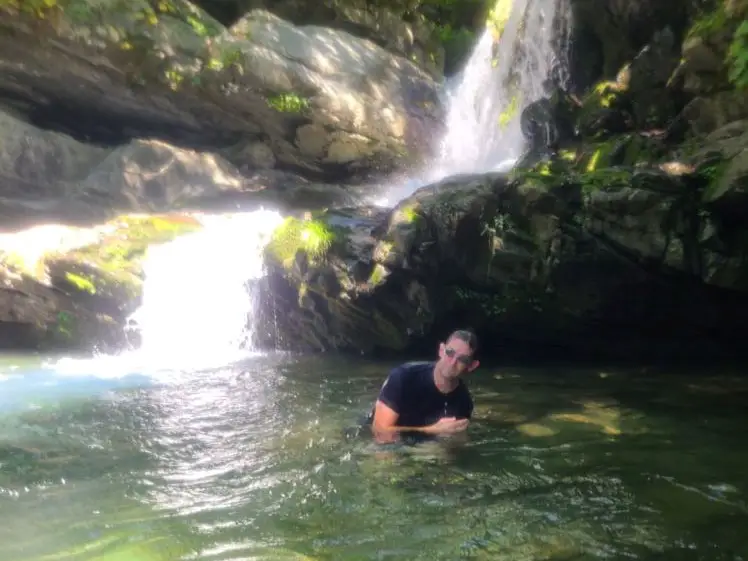When looking across a trout stream or river, you might glimpse a trout or two feeding in the shallows or the occasional raise out wide. What we experience from the surface is only a tiny fraction of the fish life underwater.
There are deep pools I blindly fish. I float dries and nymphs along the currents, and swing streamers and lures through the depths. I even bounce spoons across the smooth freestone bottom. My effort is not all in vain, I get the occasional strike or follow. So I know the pool holds fish.
It was only after donning fins and mask and diving into the depths that the true abundance become apparent. Pools which I thought held a handful of trout, more often than not, contained large schools. Sometimes 20, 30 or even 50 strong. These were not small trout either, always lurking off to the side, or towards the middle of the school will be a trout worthy of calling a trophy.
When I approach, the trout scatter in all directions. Seeking overhangs and crevices to wait out the danger. I have learned a lot about the underwater world of the trout, knowledge which assists me greatly in catching more fish. In this article, I will share some of my knowledge and hopefully convince you that swimming is one of the best and quickest ways to scout a trout stream.

What have I learned?
I have learned, there are a lot more trout than visible from the surface. Some hold deep, out of sight. Others bury themselves under overhangs. Probably nocturnal fish which waiting for the cover of darkness to feed.
I find trout holding in most parts of a pool and run. Many hold deep right beneath the fastest current. A really hard place to swing a fly or light lure. A dense, heavy spoon might work.
There is also many more large fish. Often I only see and catch smaller trout. The big ones are normally chilling near the bottom.
I learn where all the snags and other obstacles are. This saves me a lot of money in lost tackle.
Is swimming in trout rivers safe?
This is a question you can only ask yourself. Only you know your swimming capability. If you can not swim or are not confident, it is certainly not safe.
On the other hand, if you have spent your summer holidays swimming and tubing and comfortable around water then there should be very little risk.
Trout love to live in cool, clean and well-oxygenated water. This means most trout rivers are safe to swim in. The best trout streams are normally bone chilling cold, but my body normally acclimatizes after a few minutes. Plenty of time to warm back up on the walk between holes.
Where not to swim?
This should go without saying, but do not swim beyond your ability. While that turbulent stretch of violent white water might contain tempting pocket water. It is not worth the risk to jump in to explore. Moving water is powerful and even the best swimmers can struggle to keep their heads above water in such powerful currents. The same applies for waterfalls, large ones can hit the water with impressive force.
Another time you should not swim is when other fishermen are already enjoying a hole. Nothing can put trout off the bite faster than having someone swim around them. I go for my scouting swims during the week when I mostly have the rivers to myself.
Also, do not swim around dam outlets, the reservoir might seem calm but the currents can be deceivingly powerful. People drown every year getting too close to overflows and outlets. Trout feed and leave around outlets. No need to jump in and prove it.
What should I wear?
When I swim rivers, I wear a pair of long snorkeling fins and use a mask and snorkel. The fins give me plenty of forward power and floatation when I need it. I can glide around pools silently without thrashing the water with my arms.
A mask and snorkel is almost essential. They allow me to constantly view under water.
Might want to throw on a rash vest or t shirt if planning to swim down shallow ripples. I have been scratched a few times, rubbing against rocks and stones.
In the fall, when temperatures start to drop. I occasionally wear a wetsuit.
Endless free fishing tackle

One of the biggest advantages of swimming trout rivers is the abundance of lost tackle which others lose to snags. Over the years I have recovered inline spinners, jerkbaits, flies, countless spoons, from submerged logs and branches. When the Salmon are running in my local river, there are some holes I check weekly. I now have a lifetime supply of salmon spoons.
It is not only lures, I have also collected numerous sunglasses, keys, fly boxes, tippet and once even a iPhone.
When recovering, lost lures take care. There is a risk of getting tangled or hooking yourself and getting stuck under water. I always take a pair of scissors and a diving knife with me. If I ever get tangled I have the tools to free myself. The scissors makes it much safer to snip off any lures and drop them in a little bag. Make sure to collect and dispose of any lost line. We do not want that polluting our waterways.
Conclusion.
Swimming trout rivers reveals a whole different world. Shows where the trout live and provides an endless supply of free tackle. Have you swum your local fishing hole?, comment below any interesting discoveries.

